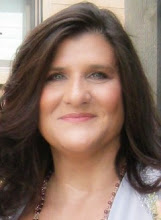October and Halloween are the season where anyone, young or old, can play dress up. We love selecting our favorite characters, time periods, monsters, or fantasy heroes. From wigs and rags to elaborate makeup, our imaginations can run wild.
In world building, whether you have chosen a specific historical period, a contemporary city, a futuristic planet, or a fantasy world, part of the fun is researching or inventing costumes.
In the latest edition of my Story Building Blocks series, the Build A World Workbook, I devote an entire section to questions about apparel with lists of resources.
To get started, here are a few basic questions:
1. What were common clothing items: for men, women, children, or the elderly?
2. Do they have uniforms? Why and for what purposes? What do they look like?
3. Do clothing items indicate status, position, or their role in society?
4. Does clothing have religious connotations?
5. What were the popular styles and color palettes? What colors were possible? Did they have plant dyes or chemical dyes?
6. Did they have shoes or other footwear? What materials were they made of?
7. Did they have natural fibers (hemp, flax, cotton) or synthetic materials?
8. How were clothes fastened? Did they have metals to make snaps or zippers?
9. Did they have hats, gloves, capes, jewelry, purses, pouches or other fashion fads?
10. How did they feel about nudity? How much skin was exposed? What about undergarments?
There are so many wonderful resources in libraries and on the internet to explore for historical clothing. When building a Fantasy or Science Fiction world, the only limit is your imagination.
For more information about dressing your characters, pick up a copy of the Build A World Workbook available in print and e-book versions.
In world building, whether you have chosen a specific historical period, a contemporary city, a futuristic planet, or a fantasy world, part of the fun is researching or inventing costumes.
In the latest edition of my Story Building Blocks series, the Build A World Workbook, I devote an entire section to questions about apparel with lists of resources.
To get started, here are a few basic questions:
1. What were common clothing items: for men, women, children, or the elderly?
2. Do they have uniforms? Why and for what purposes? What do they look like?
3. Do clothing items indicate status, position, or their role in society?
4. Does clothing have religious connotations?
5. What were the popular styles and color palettes? What colors were possible? Did they have plant dyes or chemical dyes?
6. Did they have shoes or other footwear? What materials were they made of?
7. Did they have natural fibers (hemp, flax, cotton) or synthetic materials?
8. How were clothes fastened? Did they have metals to make snaps or zippers?
9. Did they have hats, gloves, capes, jewelry, purses, pouches or other fashion fads?
10. How did they feel about nudity? How much skin was exposed? What about undergarments?
There are so many wonderful resources in libraries and on the internet to explore for historical clothing. When building a Fantasy or Science Fiction world, the only limit is your imagination.
For more information about dressing your characters, pick up a copy of the Build A World Workbook available in print and e-book versions.
Diana Hurwitz is the author of Story Building Blocks: The Four Layers of Conflict, Story Building Blocks II: Crafting Believable Conflict, Story Building Blocks III: The Revision Layers, and the YA adventure series Mythikas Island. Her weekly blog, Game On: Crafting Believable Conflict explores how characters behave and misbehave. Visit DianaHurwitz.com for more information and free writing tools. You can follow her on Facebook and Twitter.
|




Excellent post, Diana! It is so important to research period clothing because many readers of different genres are well versed in the history and wardrobe of the time in which your story is placed. Appropriate details about dress and other era specifics can make or break a book--and the writer's credibility.
ReplyDeleteThis is one more element in a long list required to write historical fiction. After trying one novel set in the 1830s, I developed a great respect for those who recreate history in fiction. It's hard.
ReplyDeleteI enjoyed that part of the research. In my workbook, you can also invent fantasy or science fiction costumes.
DeleteNice post, Diana. I used to teach a course in the History of Fashion. We've come from covering up to taking it off. Describing clothes in a book is tricky. Too much description can be too much. Too little and you've lost a great way to add character to your character.
ReplyDeleteI would love that course. Perhaps you could do some blog posts based on it?
DeleteThose are great questions, Diana. My problem is describing the clothing in great detail for some of the characters, and then getting sidetracked and forgetting to describe other characters at all.
ReplyDeleteI have a final revision pass where I delete everything but chapter headings and character descriptions. It helps me catch redundancies (I can't count the number of times I mentioned tunics in Mythikas). And lets me know if I have forgotten to describe someone.
DeleteThis is a great resource for folks who are writing period pieces. I tend not to describe my characters' clothing in much detail at all, so I have not had to do a lot of research. But it is important to get it right.
ReplyDeleteI don't need to know every little detail, but I do like enough information to get a clear view of the character. I also like it when the author describes the item in a way I can picture it without having to Google it.
DeleteImagine my dilemma: a male writer trying to describe how the wives of German spies were dressed and coiffed in Spain in 1940. Pinterest must think I'm a gay Nazi.
ReplyDelete